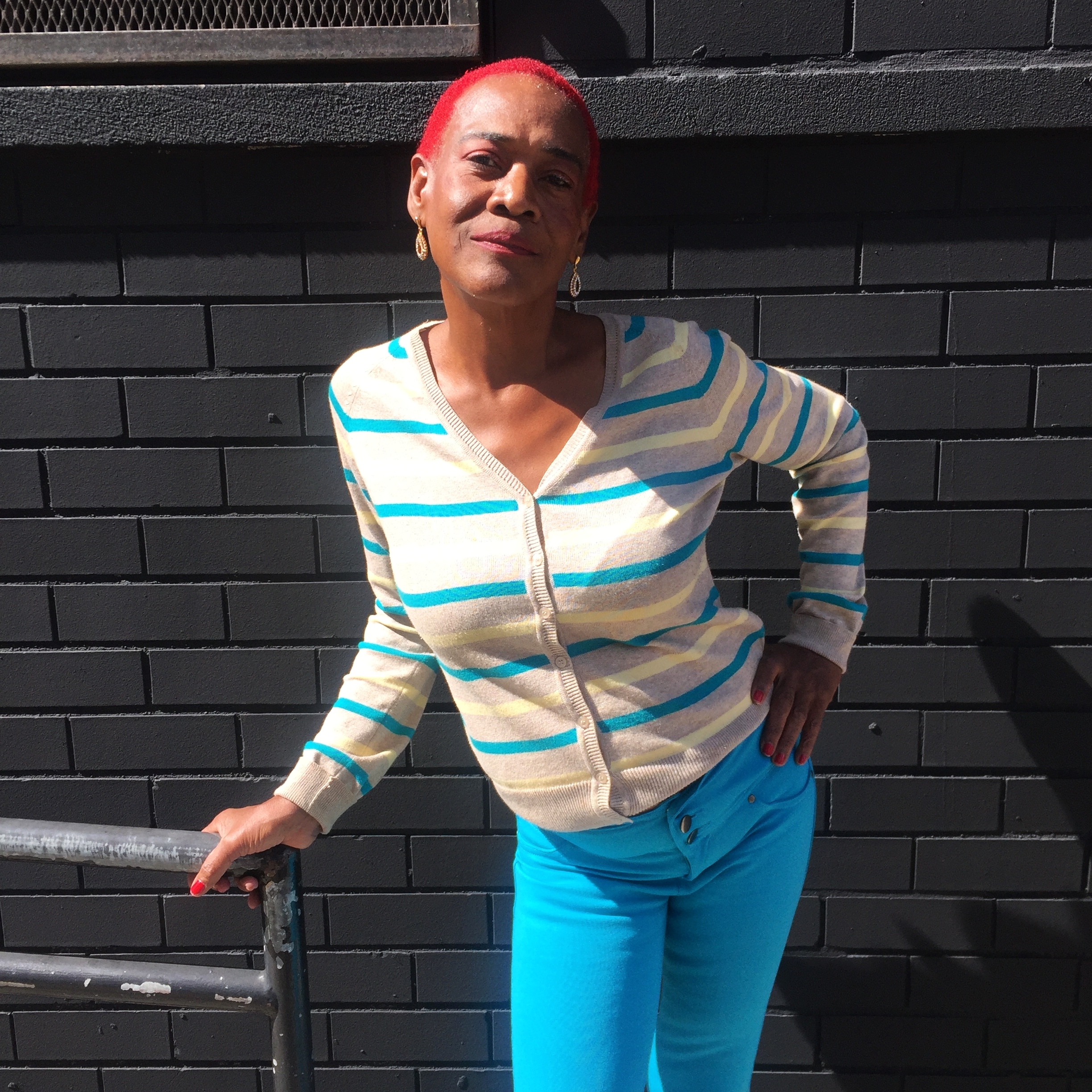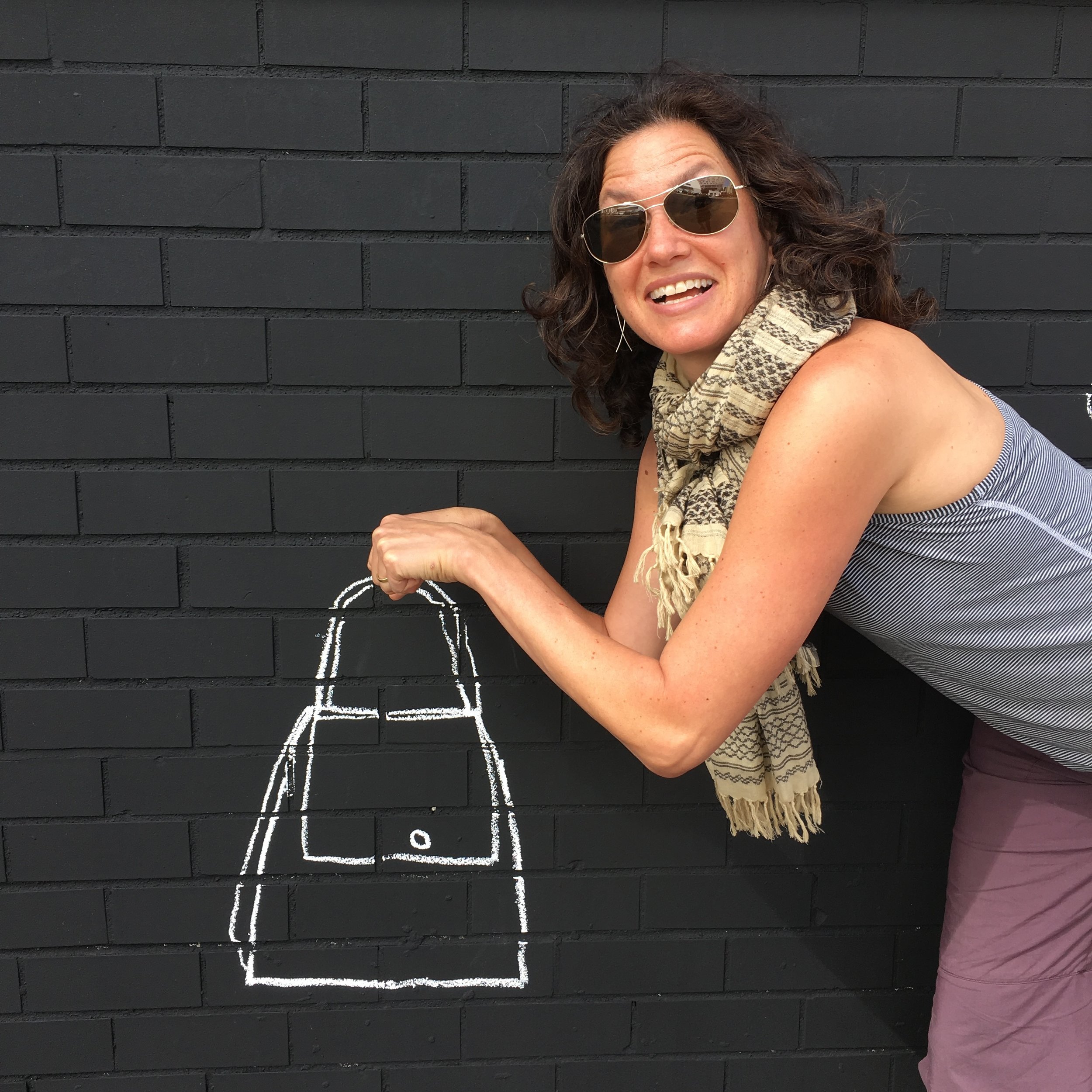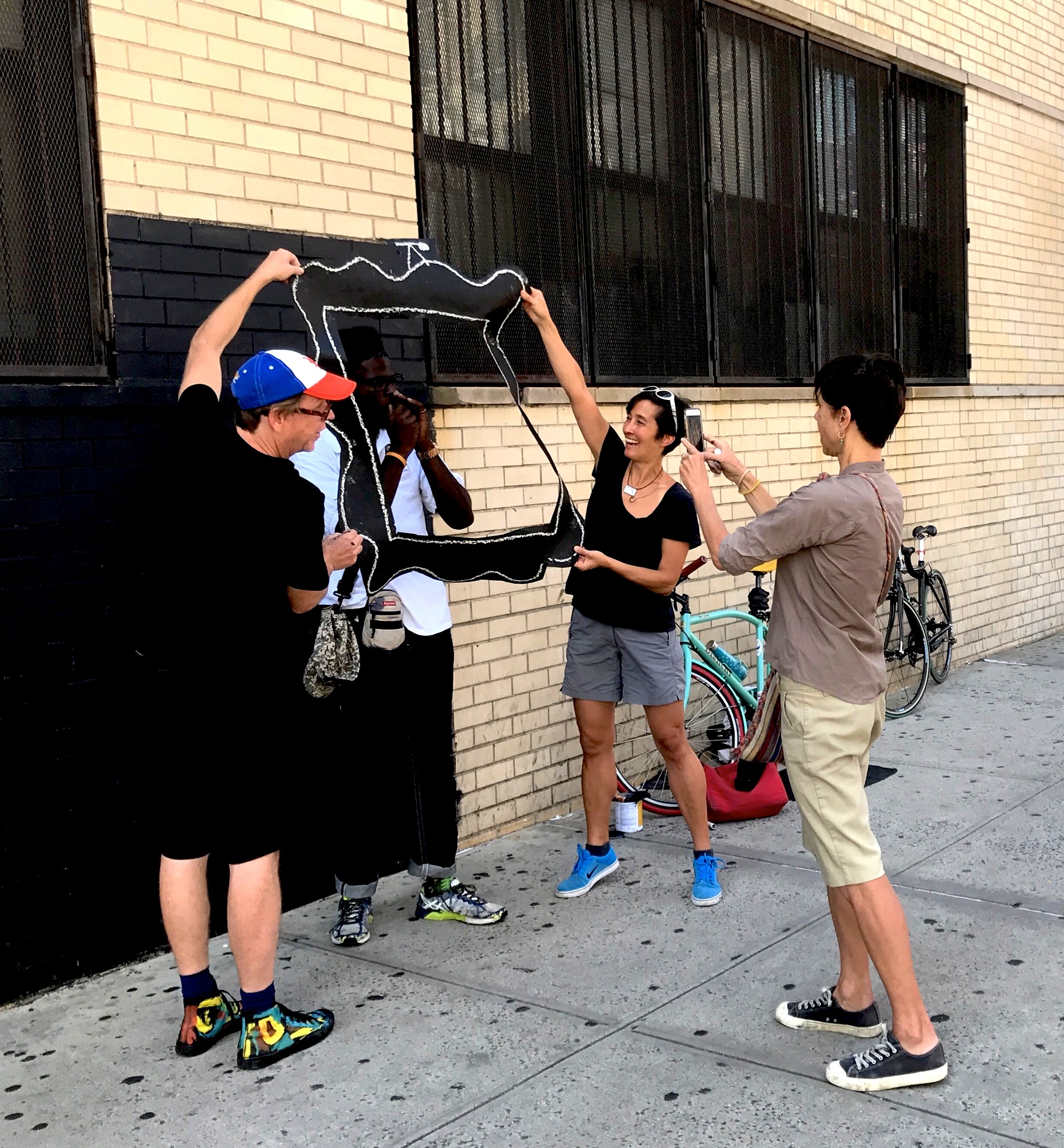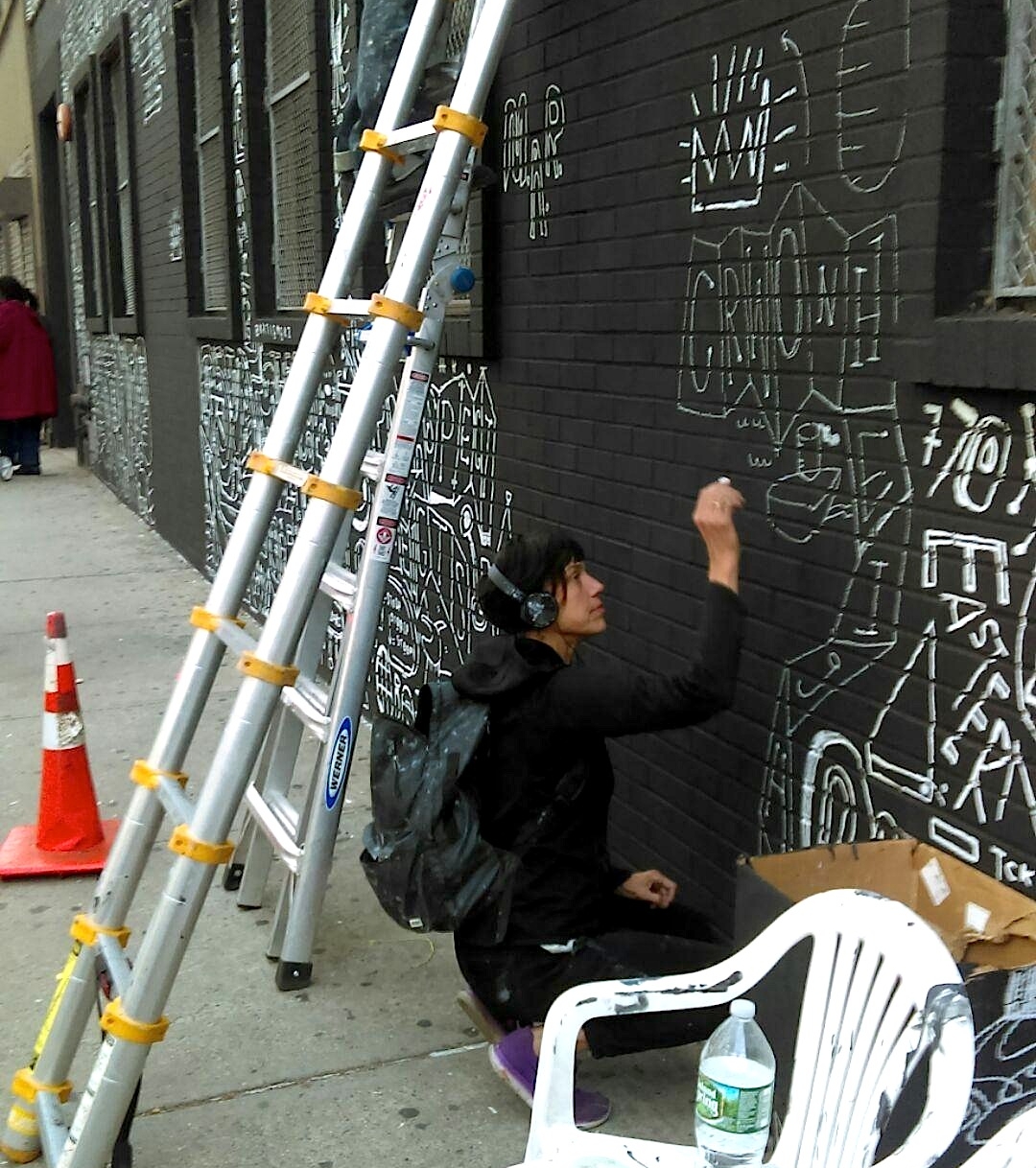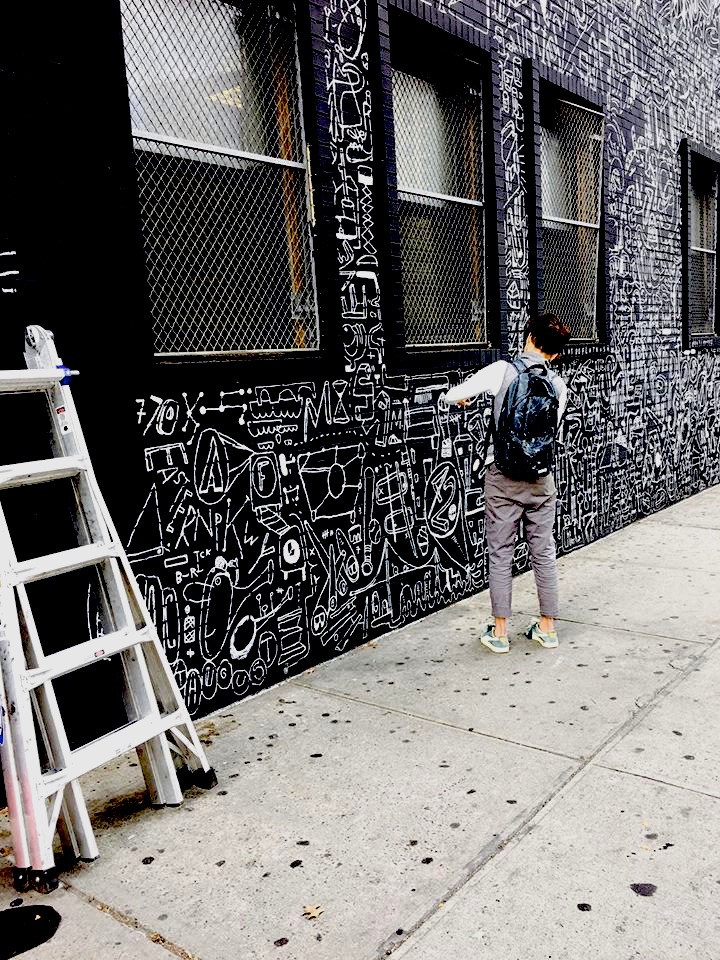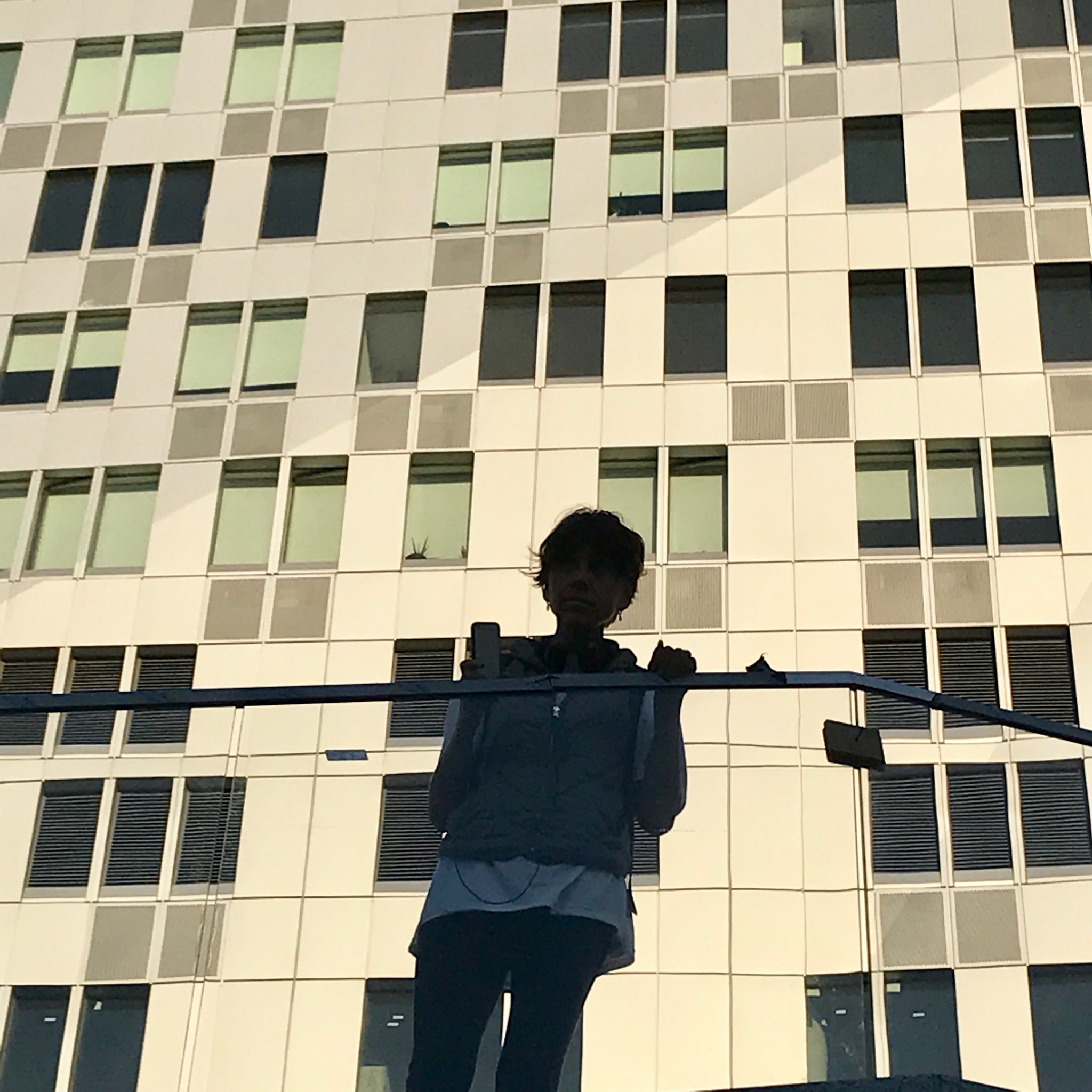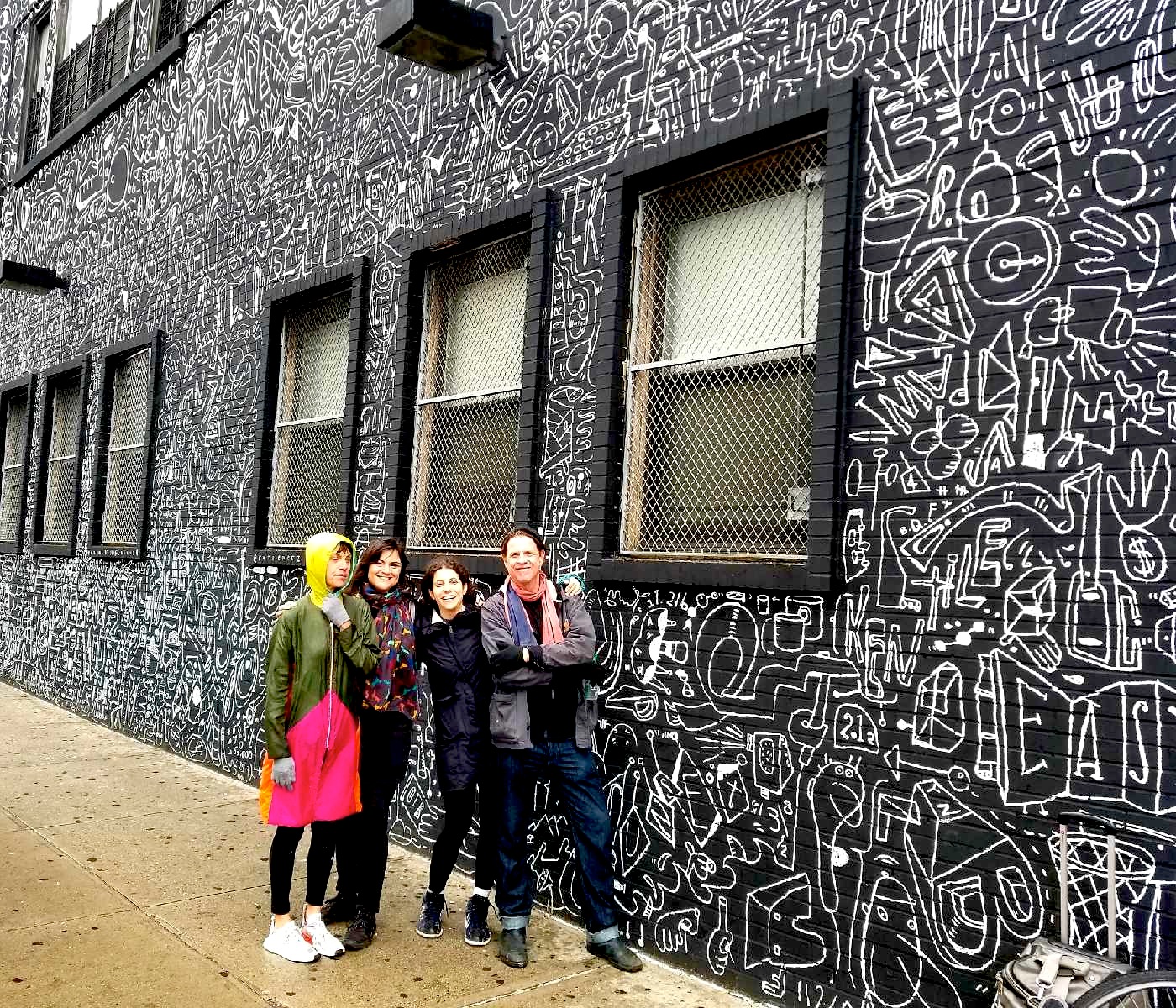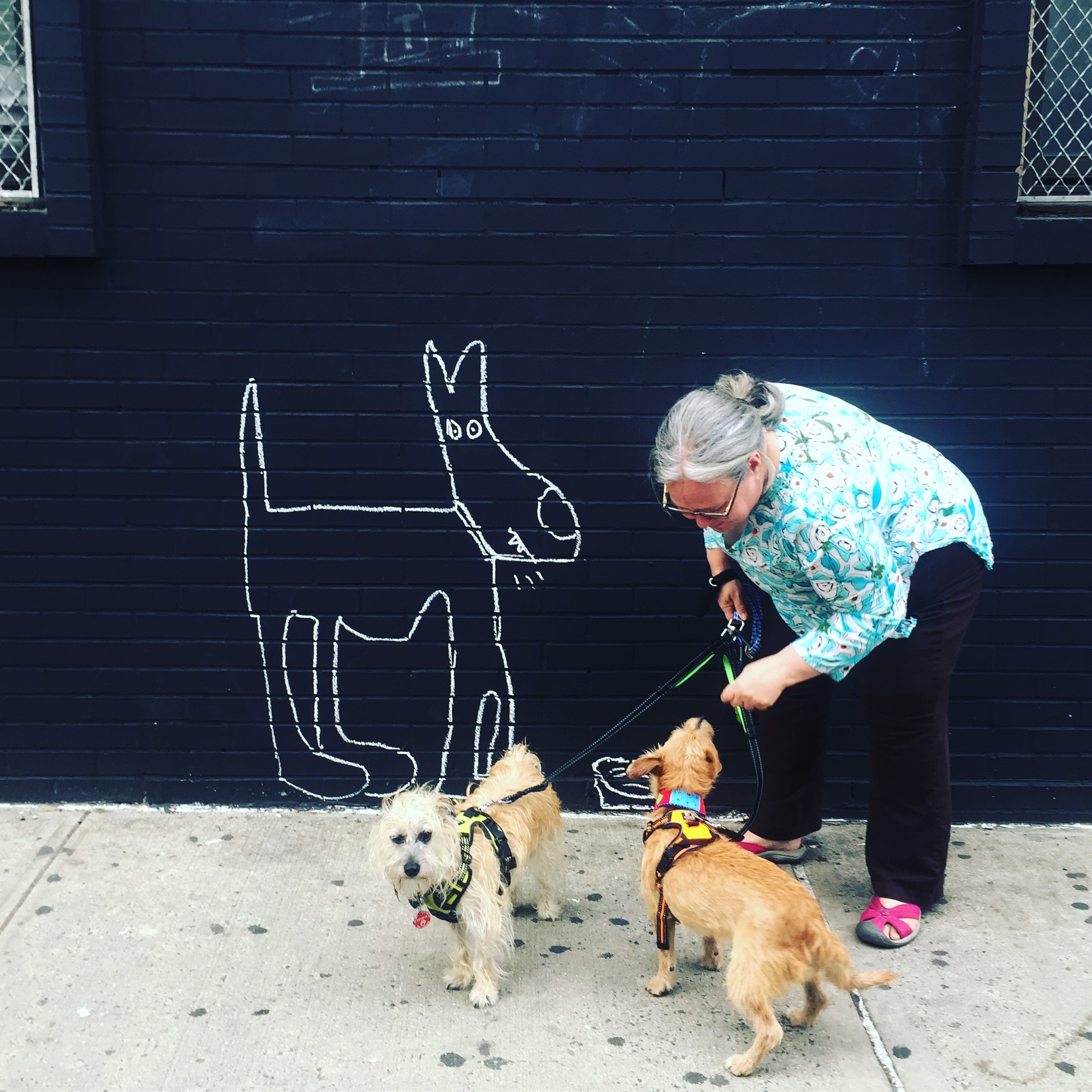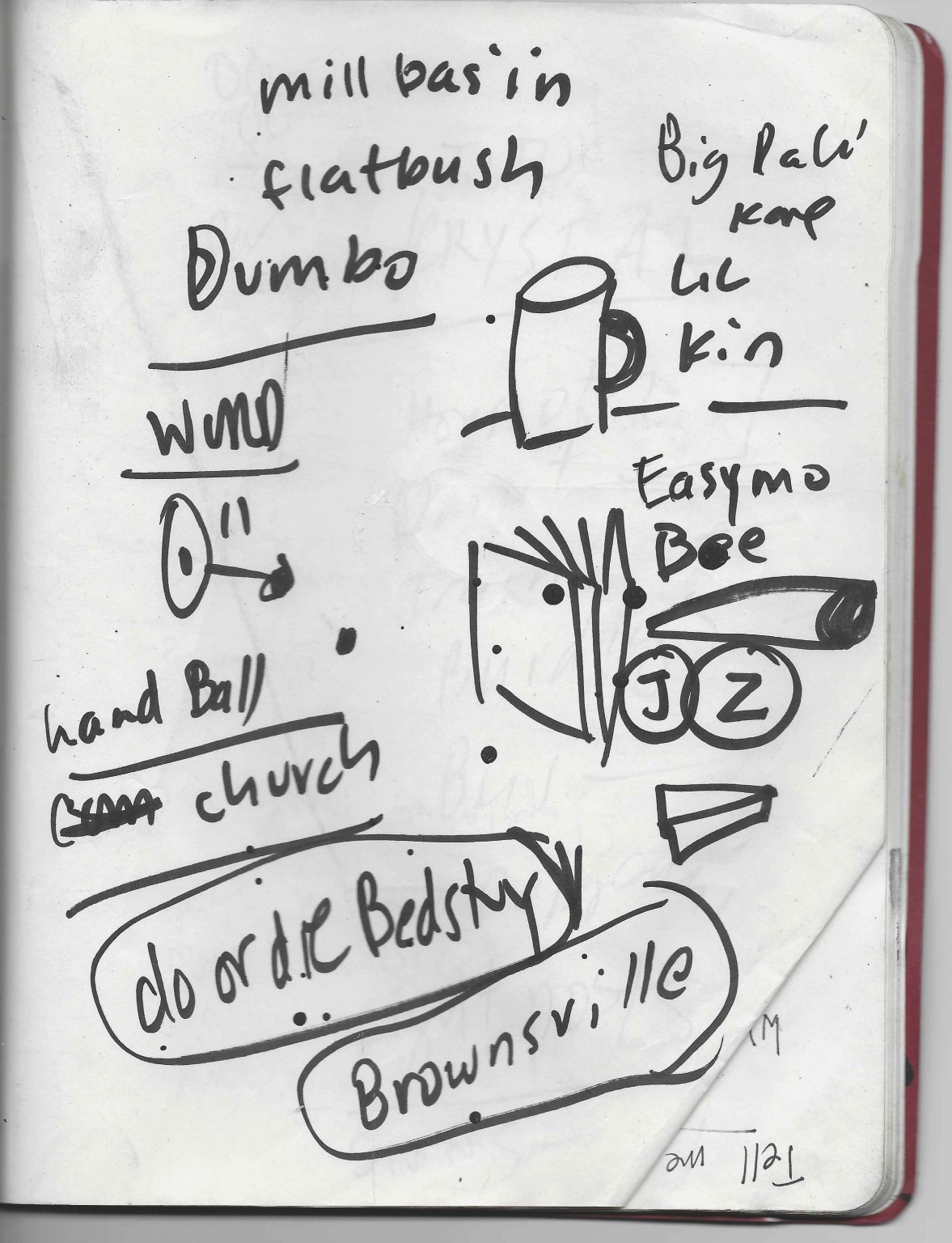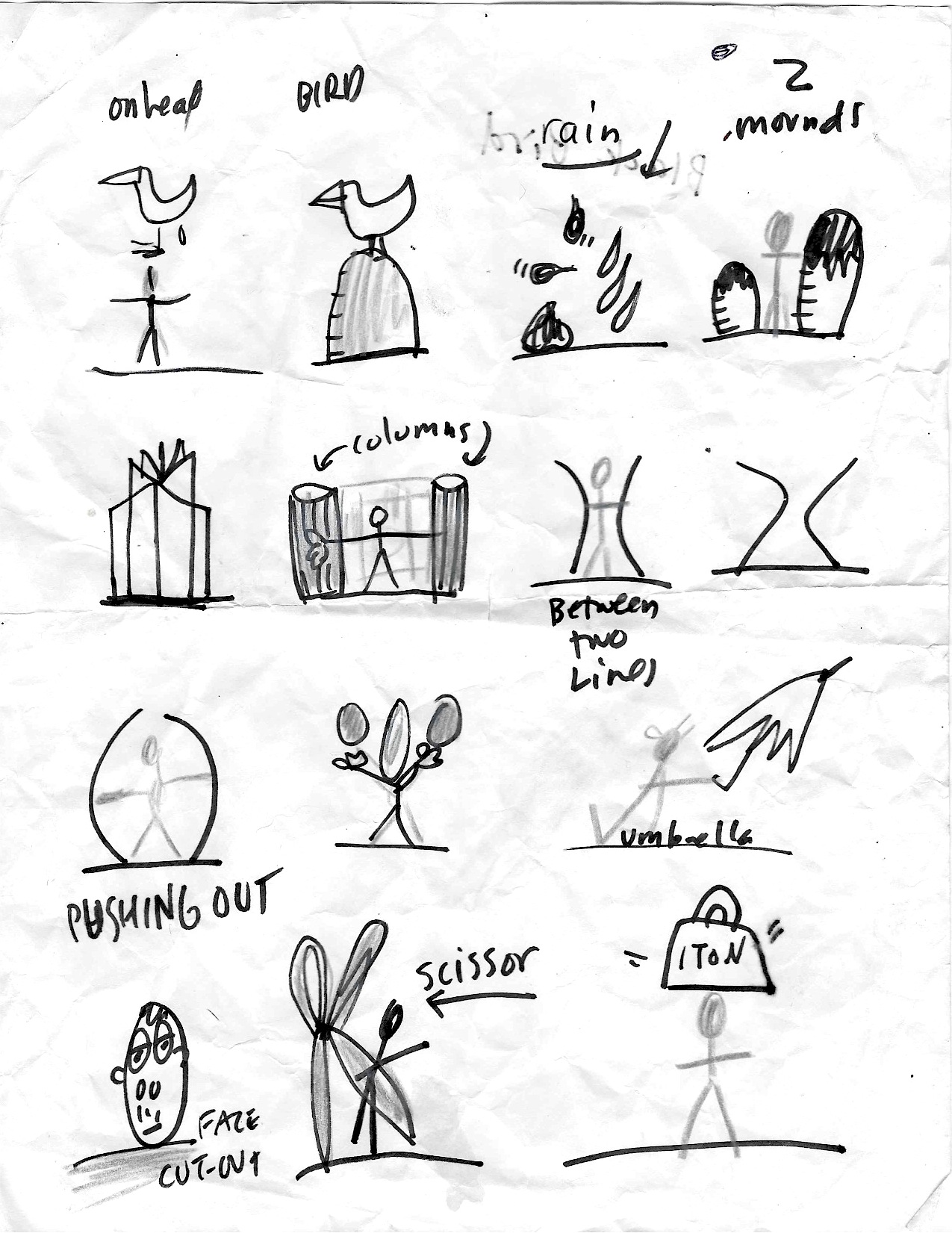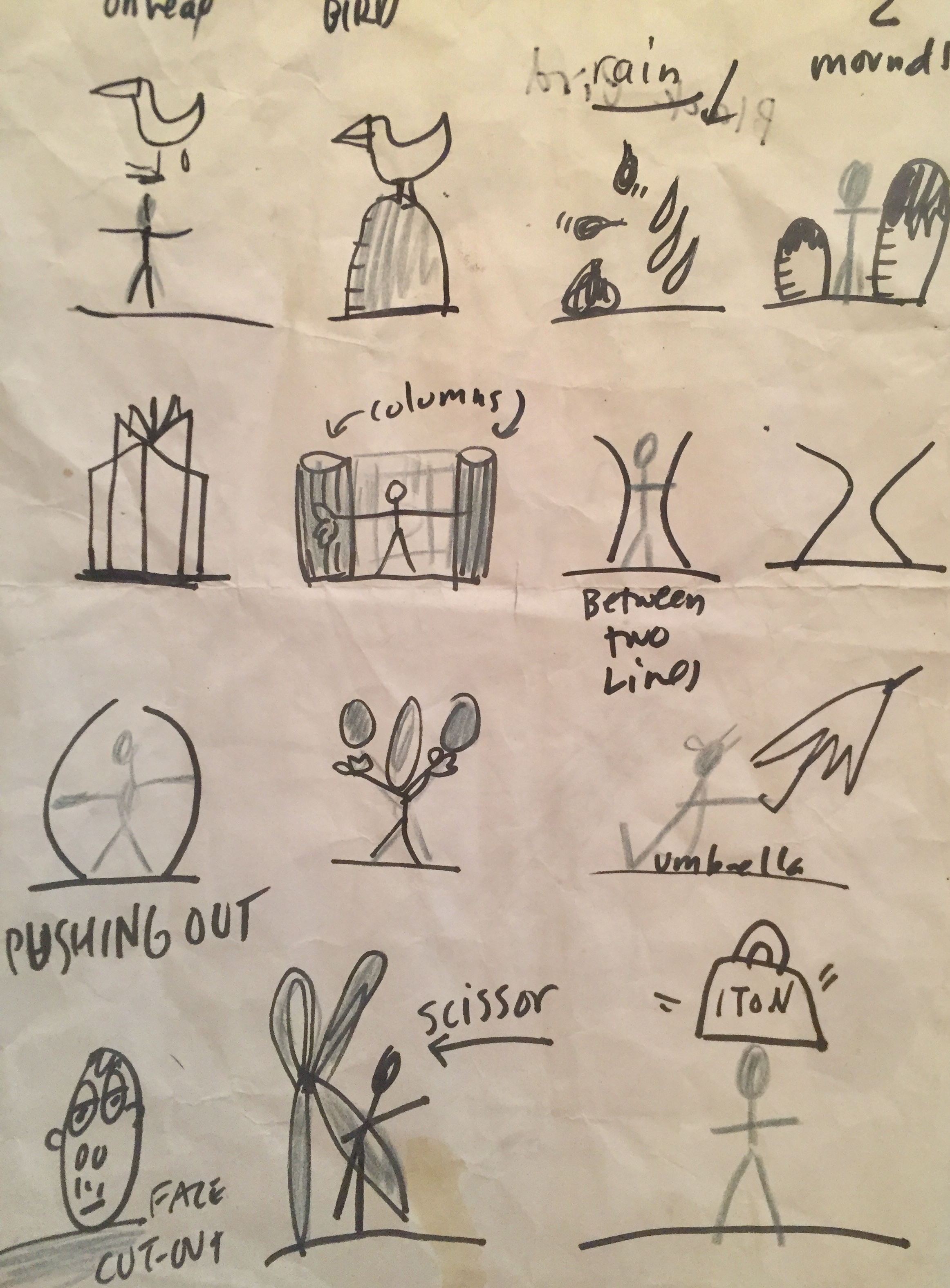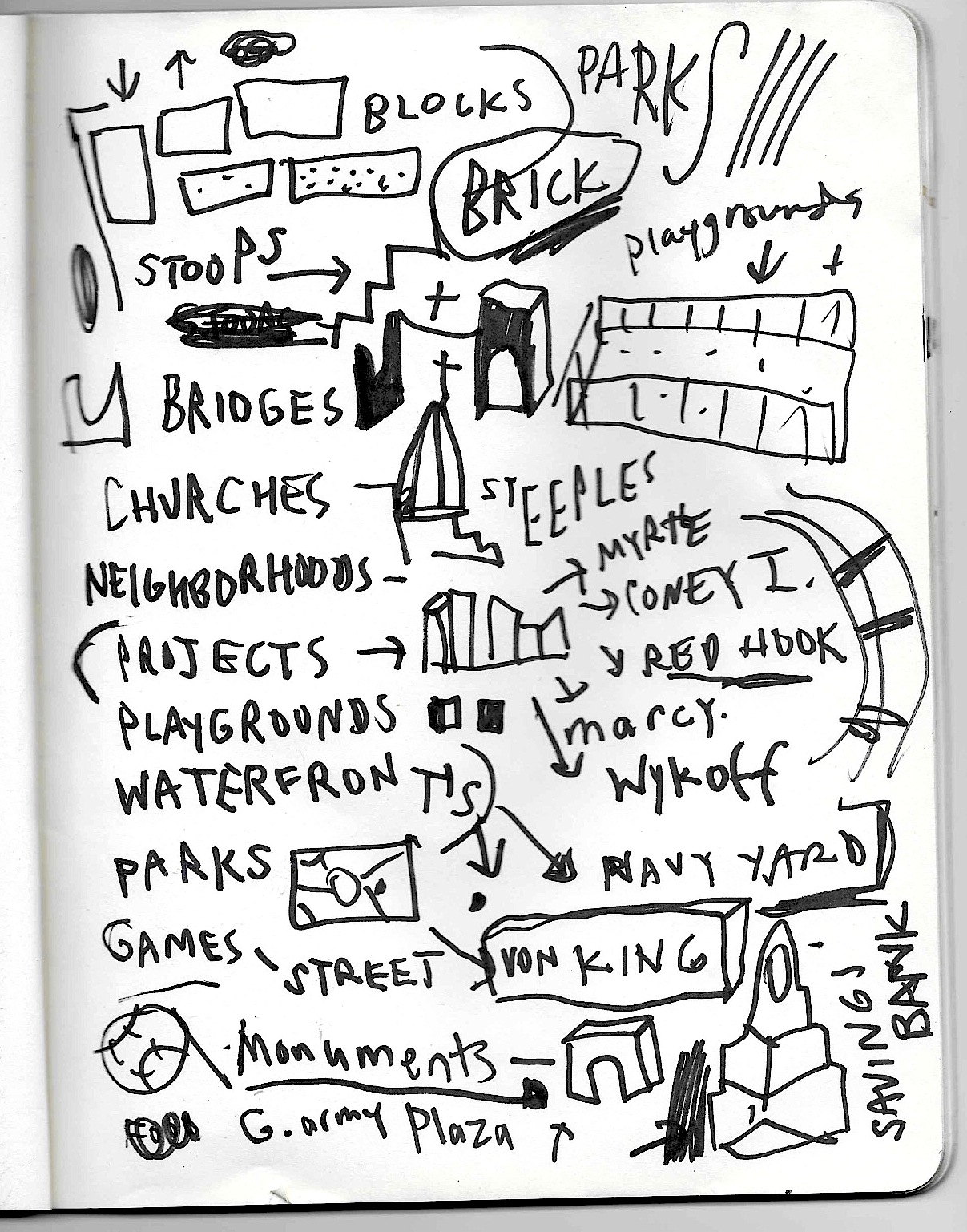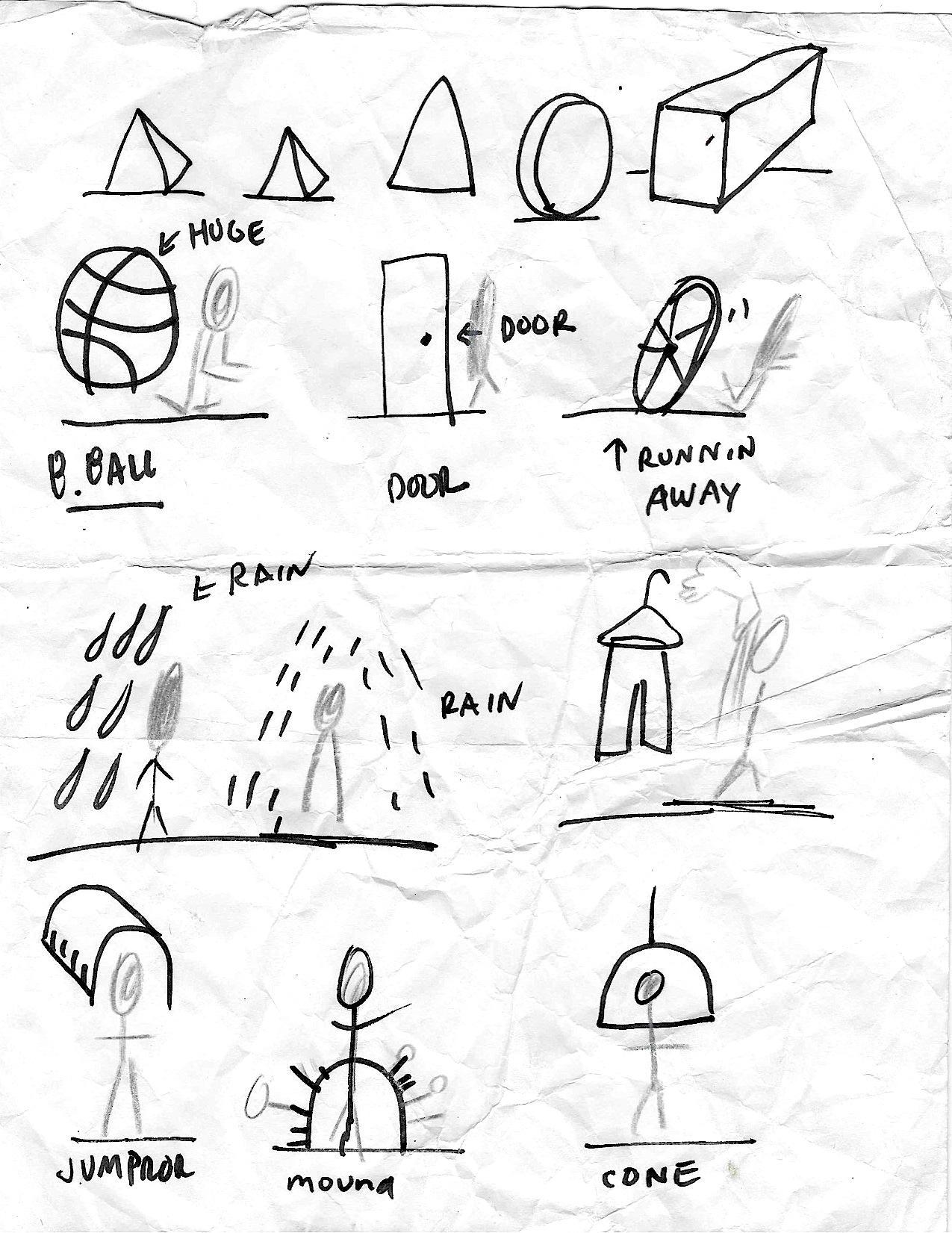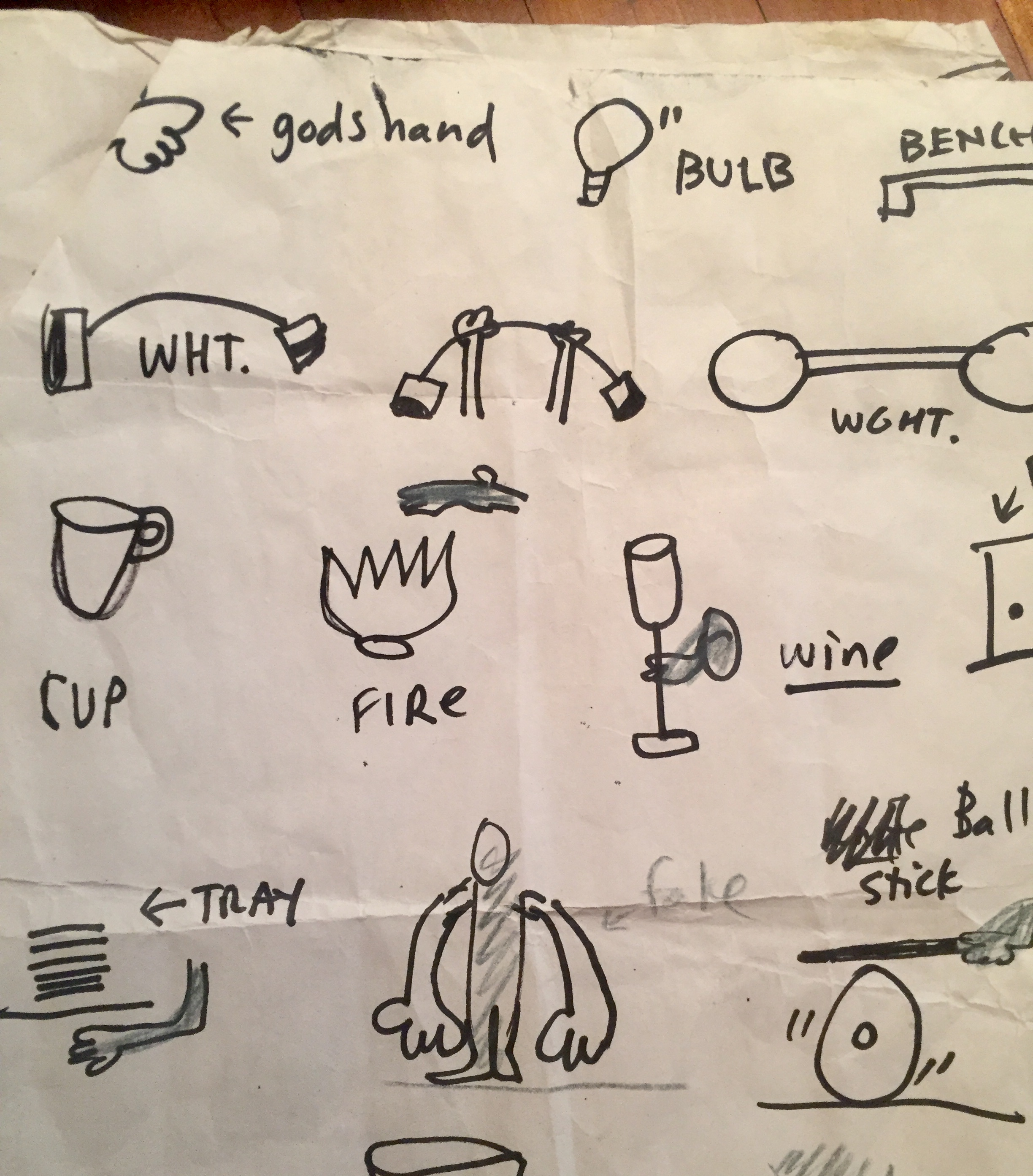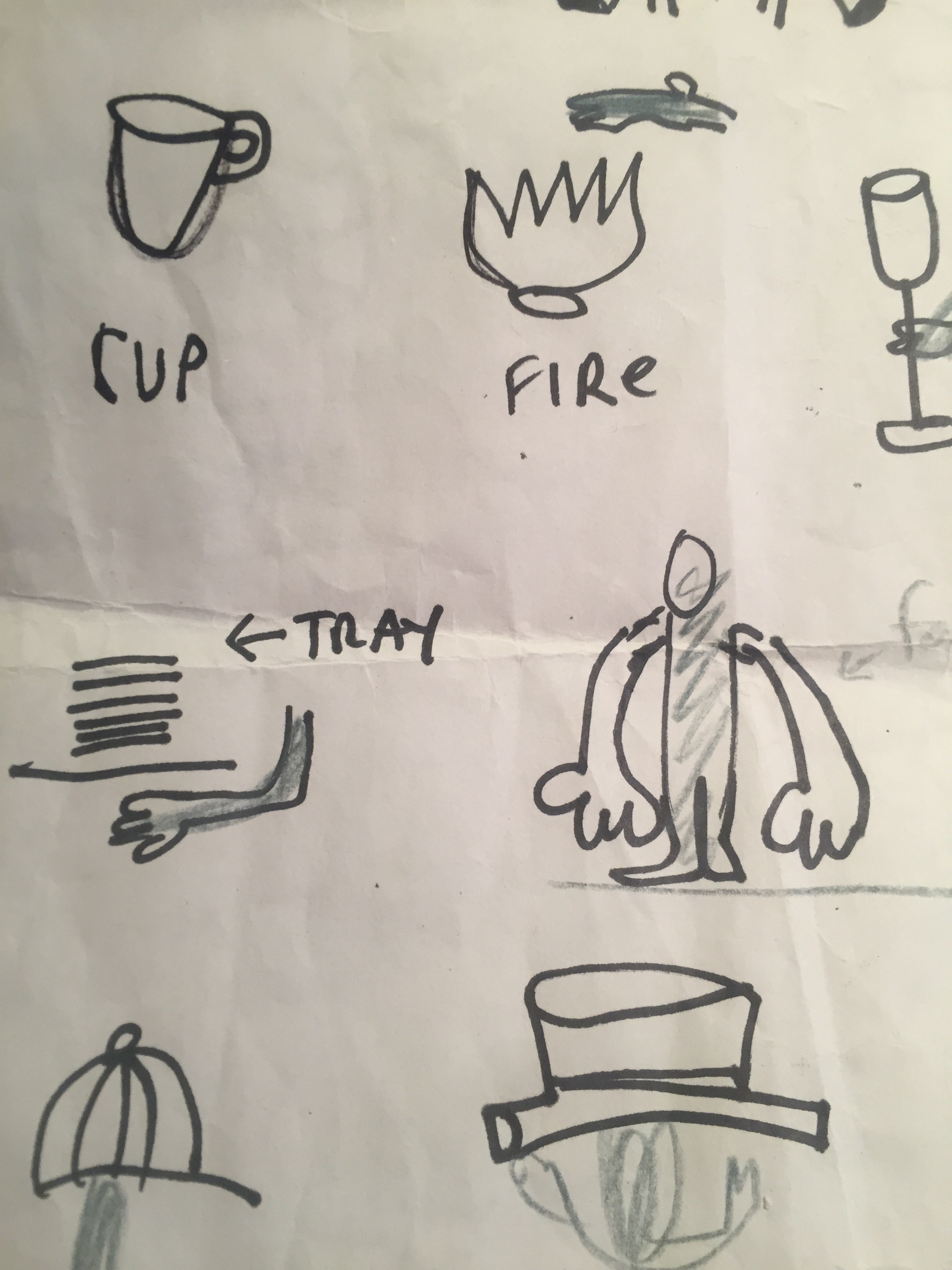80 Flatbush Avenue
September 2017
In 2017 Alloy development held a public competition to temporarily paint a mural on a 9,000 square foot building that housed the offices for the New York City Human Resources Administration Social Services Department. This building was on a wild strip of Flatbush Avenue in Downtown Brooklyn. I was chosen from a pool of about 60 other artists.
Since I am from Brooklyn I knew that this project HAD to reflect the insanity, interactivity, and performative nature of every single person that walked by. The collaborative nature of this drawing, plus the hilarious serendipity of the PORTRAITS reflect the language of Brooklyn as well as its forceful and fleeting state of being. Every mark is hand drawn and the entire wall is filled with the stories of its everyday people.
The Scale Explodes Upward.
HOW
The building was by painted black by Liberty Paint Co. and would follow them with my drawing as we both shared the same lifts. The building had to be completed by the day of the New York City Marathon so I had about 35 days to finish the entire wall. There was not enough time to correct or re-draw so that everything initially drawn stayed as is. I wanted the drawing to be read from up close as well as from across the street so I enlarged the scale on the upper half of the building. I had no way to judge this scale except by a logic in my body.
THE PORTRAITS
I wanted to make the building more than just a mural, and wanted the process of it to be an experiment in absolute open-ness, spontaneity and connection. Before beginning, I set an intention to interact and be present with everyone that engaged me while I worked. Given the busy location, this intention was easy to achieve. The building housed the New York City Human Resources Administration Department of Social Services. During the day the building was a non-stop hub of interaction and activity. Everyone working at the building was a huge part of why this project was so special. All of the employees of 80 Flatbush are all up on the wall in some way. It is their building. They are the true landlords of the over sized cartoon that inhabited the surface of their workplace.
Portraits - Almost everyone passing by would stop and chat, and from this point on - the improv would begin.
At night after I was done, I would leave drawings on the blank part of the black wall. This left an overnight opportunity for people to improv and take pictures with themselves interacting with the objects ( a crown, a basketball ball, a turntable, headphones ) and create their own scene. It was amazing. People would also yell suggestions of things to include into the wall from their cars or toss notes to me while I was on the lift. One young girl had her sister call me from the middle east, where she translated a sentence so I could draw it on the wall for good luck.
I have never been as moved by human beings as I was while working on this building. It was a humbling and beautiful experience. I miss the insane, nonstop highway of everyday people. These portraits are remnants of a moment of connection that can happen within any random second, and this playful trust created a universal humanity that is hard to forget.
FOOTNOTE ABOUT THE PROCESS: I HAVE NO PLAN WHEN I DRAW / IT IS A SPUR OF THE MOMENT PROCESS THAT REFLECTS THE KINETIC ORDERING OF MY MINDS IMAGES, ASSOCIATIONS AND FEED.
Below are notes and sketches for portrait scenarios for the wall.
THE LOCATION
NEAR BAM / BARCLAYS / THE APPLE STORE / WHOLE FOODS 365 / FULTON STREET / DOWNTOWN BKLYN
THE HISTORY OF FLATBUSH AVENUE
THE HISTORY OF FLATBUSH AVE begins in 1651. The Flatbush neighborhood was established as a Dutch colony, under the name Midwout. Midwout became known as Flatbush as Irish immigrants and Orthodox Jews began moving into the neighborhood after its establishment. Soon after the founding of Midwout, the land was surrendered to the English and became known as Flatbush. Like many neighborhoods in New York, Flatbush was known for its multiculturalism before recent gentrification.
THE HISTORY OF THE BUILDINGS 80 Flatbush and 94 Flatbush is one that is inseparable to the history of the neighborhood. The two buildings on which the mural exists represent two halves of the complex history of Flatbush, one half being corporate and the other half being organic. 80 Flatbush was built in the 50's to be an office for the State of New York. 94 Flatbush was a movie theatre during the prohibition that morphed into a bowling alley and billiard hall as the 20's ended and 1933 arrived. Flatbushers and Brooklynites congregated at these buildings to participate in the law and outside the law. The structures stood as two halves of the same whole, allowing space for discussion and public action. As time progressed, the Flatbush neighborhood changed with the tide of gentrification. Today billiard halls are empty and high-rises are full. Merz's mural outlines processional space for working class people and records their place in the history of Flatbush.

